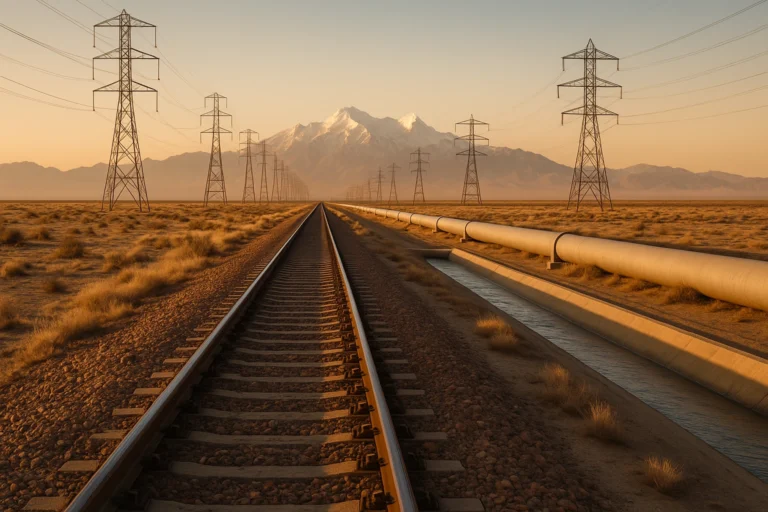
Through a wide-ranging set of incremental measures introduced since late 2024, China’s leadership aims to bolster market sentiment, rejuvenate consumption, and guide the economy toward a stronger and more balanced trajectory in 2025.
A Moment of Policy Determination
In the final months of 2024, China introduced a flurry of new economic policies, signaling a decisive pivot toward stronger macroeconomic support and a more proactive stance on domestic demand. Major announcements from the People’s Bank of China (PBoC), the Ministry of Finance, and other top agencies have sought to counteract weak consumer spending, stabilize critical financial markets, and ultimately fulfill annual development goals. While observers had long anticipated that Beijing would “do more,” the scope and speed of these incremental measures caught many by surprise. Against the backdrop of impending external uncertainties—including the possible return of aggressive U.S. tariffs under President Donald Trump—the question now becomes whether these actions can provide a lasting boost to the economy, quell systemic risks, and foster enduring social confidence in 2025 and beyond.
Over the course of just a few months, policymakers have introduced new monetary instruments, ramped up fiscal spending, and targeted real estate and capital markets with specialized support. The rapid pace of these measures has already delivered observable effects: notable improvements in consumer sentiment, an upturn in key economic indicators, and a more orderly approach to local government debt. Yet, these policies do not merely reflect a short-term push for recovery. They also point to deeper structural objectives—such as addressing local governance challenges and implementing long-term urbanization strategies—that will shape China’s economic and political landscape going forward.
Developments and Shifts in Policy
In late July 2024, China’s Politburo set the tone by emphasizing the need for stronger macroeconomic efforts to meet annual targets, particularly through expanded domestic demand. Although high-level signals had emerged earlier in the year, it was not until late September that a clear turning point materialized. On September 24, the PBoC, the National Financial Regulatory Administration, and the China Securities Regulatory Commission jointly unveiled several high-profile actions aimed at sustaining growth momentum, stabilizing the property sector, and shoring up the stock market. Within weeks, the Ministry of Finance followed suit with a “package of incremental policies,” which included restructuring local government debts, providing capital buffers to major state-owned banks, and implementing measures to halt the slump in real estate sales.
By November, the scope of local government debt restructuring reached an unprecedented RMB 12 trillion (approximately USD 1.7 trillion). Banks were encouraged to lower mortgage interest rates on existing loans, while the central bank introduced innovative tools such as the Securities-Fund-Insurance Swap Facility (SFISF) and targeted re-lending for stock repurchases. These actions, coming in quick succession, reflect a new sense of urgency—and confidence—in the potential of “early and forceful” intervention. In policy terms, the government is attempting to get “ahead of the market curve,” restoring faith among households, businesses, and international investors.
Yet these announcements do not exist in a vacuum. The Central Economic Work Conference in December 2024 strengthened calls for an even more proactive fiscal policy, explicitly reviving the notion of an “appropriately loose” monetary stance. The last time such terminology appeared was 14 years ago, underscoring how seriously China’s leadership now treats the threat of a continuing slowdown. At the same time, looming external risks, particularly from the United States, have placed a premium on strategic preparedness. As Washington gears up for potential new tariffs and technology restrictions, Beijing has reiterated its commitment to “bottom-line thinking,” ensuring that policies can be swiftly adapted if worst-case scenarios materialize.
What It Means for the Economy and Politics
Economy: Multi-Dimensional Boost with Caveats
Economically, the new measures promise fresh impetus for growth by encouraging stronger consumer confidence, revitalizing real estate transactions, and injecting liquidity into the equity market. The concerted emphasis on local government debt restructuring—now targeted at RMB 12 trillion—seeks to mitigate the longstanding risks posed by off-balance-sheet borrowing, freeing local authorities to spend on infrastructure and essential public services. Meanwhile, lower interest rates and expanded credit facilities could spur consumption, buoying sectors such as automobiles, home appliances, tourism, and retail, all of which stood out as underperformers in the wake of subdued household spending.
Companies operating in infrastructure, urban development, and state-backed projects appear to be the clearest winners from this wave of stimulus. China State Construction Engineering Corporation (CSCEC), China Railway Group, and China Communications Construction Company (CCCC) are among the giants likely to see expanded contracts as local governments ramp up project spending. Likewise, leading property developers that maintain relatively solid financial health, such as China Vanke and China Resources Land, could benefit from renewed homebuyer interest as mortgage rates trend downward. In the banking sector, Industrial and Commercial Bank of China (ICBC), China Construction Bank (CCB), and Bank of China (BOC) may capitalize on growing loan demand and improved asset quality as debt restructuring eases local government defaults.
Consumer-focused companies also stand to gain. Automakers, including BYD, Geely, and SAIC Motor, are poised for growth if consumer sentiment continues to improve and the government expands incentives for new-energy vehicles. Retail and e-commerce platforms like Alibaba and JD.com could see a surge in sales if disposable incomes rise and households loosen their purse strings. Firms in the tourism and hospitality sectors, from major airlines to hotel chains, may also benefit from renewed domestic travel demand in 2025.
However, not all sectors are equally positioned. Manufacturers heavily reliant on exports to the United States, especially electronics and intermediate goods producers, face elevated risks if new tariffs or technology bans take effect. Companies like Foxconn (which assembles technology for various global brands) may need to diversify supply chains or accelerate the relocation of production lines. Smaller private firms outside strategic sectors can also find financing difficult to secure if banks concentrate resources on state-linked projects or larger, more established players. Businesses that remain highly leveraged, such as certain real estate developers carrying sizeable debt loads, could struggle to access credit—even with interest rates lowered—if lenders perceive them as high risk.
In short, China’s concerted policy thrust offers significant opportunities for sectors aligned with infrastructure growth, consumer upgrades, and financial stability. Yet the unevenness of the recovery, shaped by geopolitical uncertainties and domestic credit dynamics, means some companies will have to navigate continuing headwinds.
Politics: Strengthening Governance and Strategic Preparedness
Politically, the flurry of new policies serves multiple goals. First, by responding to sluggish demand and rising uncertainties with decisive action, Beijing seeks to bolster its credibility and reassure the public that it can deftly manage both domestic pressures and international headwinds. The Politburo’s emphasis on tackling local government debt, combined with reforms to special-purpose bond issuance, points to a drive for more disciplined and transparent governance at the local level. Leaders appear increasingly focused on preventing the overreach and “internal competition” among municipal officials, which has historically fueled unproductive or redundant projects.
Second, the looming specter of higher U.S. tariffs and expanded technology embargoes highlights China’s commitment to “extreme-case scenarios.” Officials have repeatedly cited the need to maintain a robust policy toolbox: if tension escalates, the central bank and other agencies stand prepared to deploy additional interest rate cuts, credit facilities, or special bond issuances. By integrating these tactics into a forward-looking plan, policymakers hope to prevent sudden shocks from derailing 2025 growth targets or undermining vital industries such as semiconductors and advanced manufacturing.
Finally, the December Central Economic Work Conference underscored the urgency of balancing short-term stimulus with long-term structural reform. This balance includes reshaping fiscal relationships between central and local governments, solidifying the “new model” for real estate development, and ensuring that the capital market continues its move toward comprehensive regulatory improvements. Beyond immediate crisis management, the aim is to lay a firmer institutional foundation for the next stages of China’s development—particularly as the nation transitions from “Fourteenth Five-Year Plan” to “Fifteenth Five-Year Plan” objectives.
Outlook: Pathways to a Sustainable Recovery
While it is too early to declare victory over economic challenges, the rapid results of these incremental policies—visible in revived consumer spending data and gradual improvements in property transaction volumes—indicate a renewed sense of purpose. If sustained, China’s economic recovery could become stronger and more inclusive, supported by higher levels of household consumption, robust infrastructure investment, and strategic urban planning. The continuing efforts to fortify local governance and refine financial regulations may also help limit systemic risks, thus strengthening the resilience of China’s financial system.
That said, persistent global volatility—particularly tensions with the United States—will test Beijing’s capacity to adapt. The ambition to maintain “appropriately loose” monetary settings, carry out large-scale fiscal stimulus, and still keep a watchful eye on financial stability demands careful calibration. Too little intervention risks prolonging sluggish growth, while excessive stimulus could reignite asset bubbles or inflationary pressures. The government appears cognizant of these trade-offs, hence the repeated call to “expand the policy toolbox” and refine scenario planning.
For businesses, the message is clear: sectors aligned with China’s consumption upgrade, infrastructure expansion, and digital transformation stand to gain the most. Real estate developers with stronger balance sheets, major construction firms linked to local government projects, and the country’s largest banks will likely enjoy steady growth avenues in 2025. By contrast, export-reliant manufacturers, tech assembly plants depending on U.S. partnerships, and heavily indebted enterprises in saturated markets could feel the pinch of mounting competition and geopolitical unease. Ultimately, the success of China’s new policy direction rests on its ability to strike a harmonious balance between near-term boosts to demand and the deeper, structural recalibrations necessary for sustainable growth.



